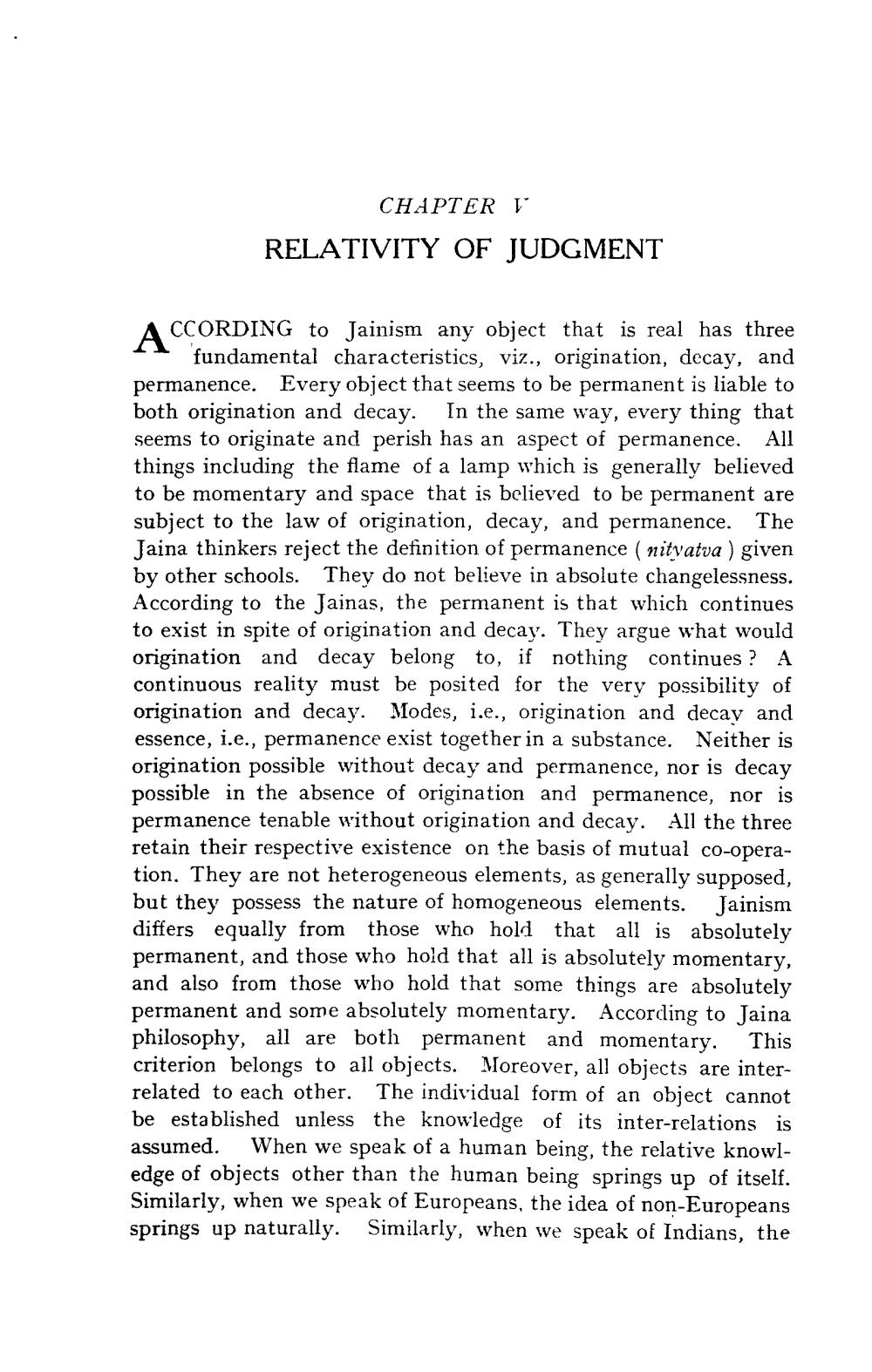________________
CHAPTER V RELATIVITY OF JUDGMENT
ACCORDING to Jainism any object that is real has three
fundamental characteristics, viz., origination, decay, and permanence. Every object that seems to be permanent is liable to both origination and decay. In the same way, every thing that seems to originate and perish has an aspect of permanence. All things including the flame of a lamp which is generally believed to be momentary and space that is believed to be permanent are subject to the law of origination, decay, and permanence. The Taina thinkers reject the definition of permanence (nitvatva ) given by other schools. They do not believe in absolute changelessness. According to the Jainas, the permanent is that which continues to exist in spite of origination and decay. They argue what would origination and decay belong to, if nothing continues ? A continuous reality must be posited for the very possibility of origination and decay. Modes, i.e., origination and decay and essence, i.e., permanence exist together in a substance. Neither is origination possible without decay and permanence, nor is decay possible in the absence of origination and permanence, nor is permanence tenable without origination and decay. All the three retain their respective existence on the basis of mutual co-operation. They are not heterogeneous elements, as generally supposed, but they possess the nature of homogeneous elements. Jainism differs equally from those who hold that all is absolutely permanent, and those who hold that all is absolutely momentary, and also from those who hold that some things are absolutely permanent and some absolutely momentary. According to Jaina philosophy, all are both permanent and momentary. This criterion belongs to all objects. Moreover, all objects are interrelated to each other. The individual form of an object cannot be established unless the knowledge of its inter-relations is assumed. When we speak of a human being, the relative knowledge of objects other than the human being springs up of itself. Similarly, when we speak of Europeans, the idea of non-Europeans springs up naturally. Similarly, when we speak of Indians, the




